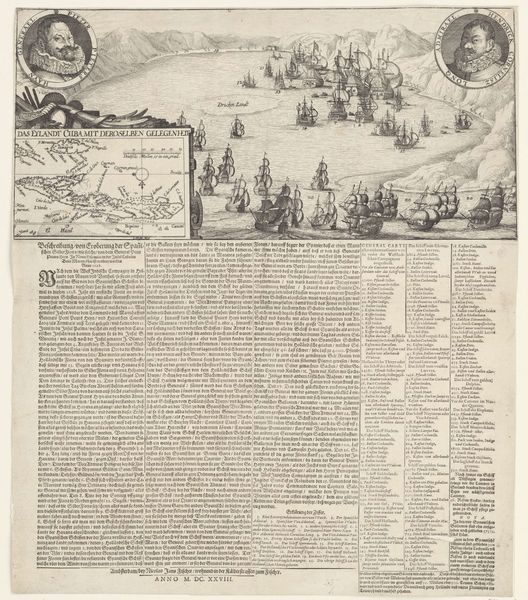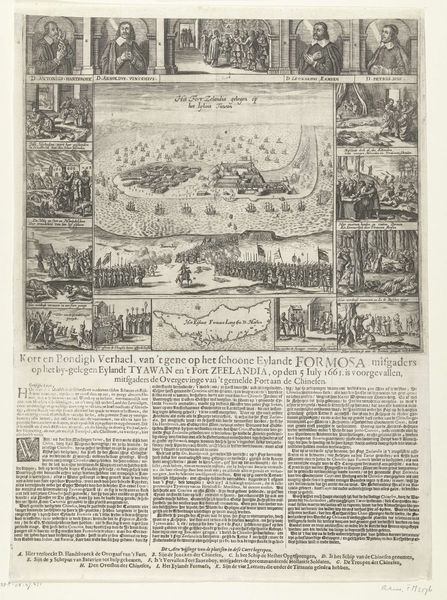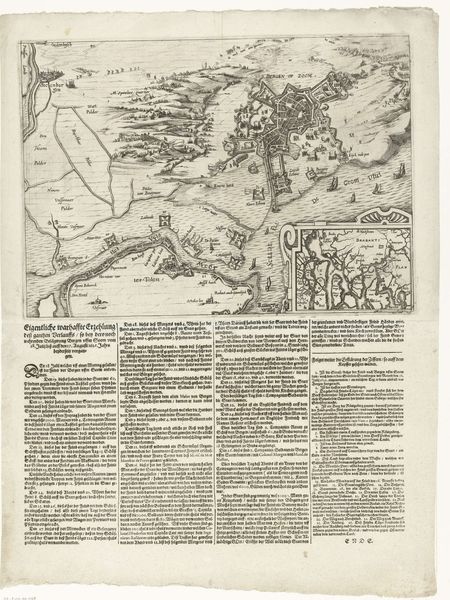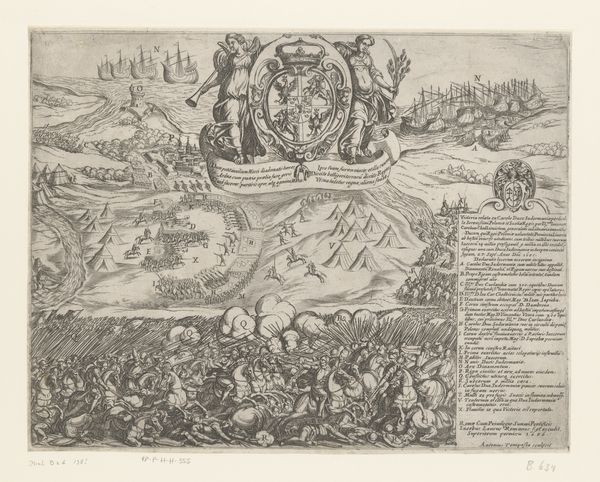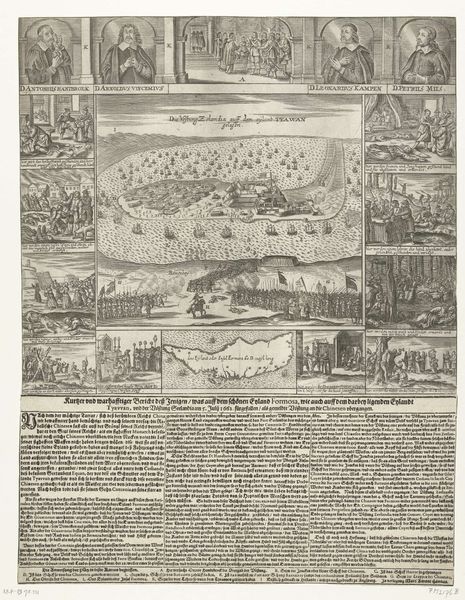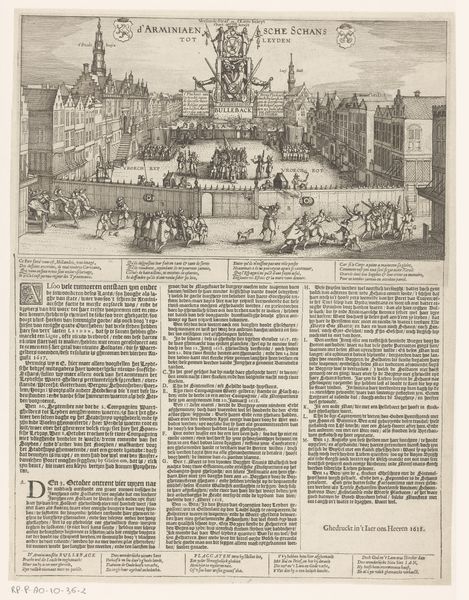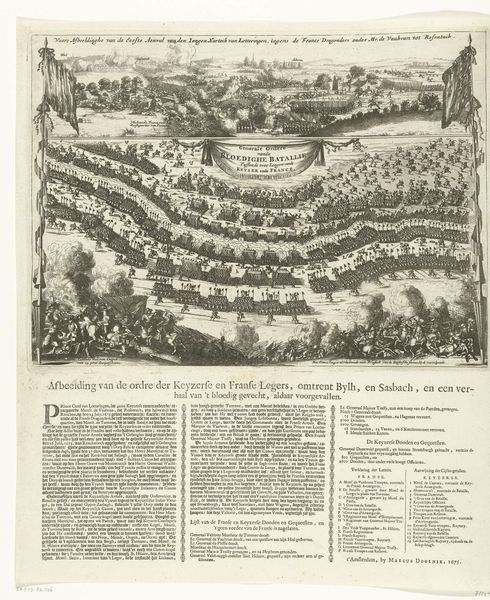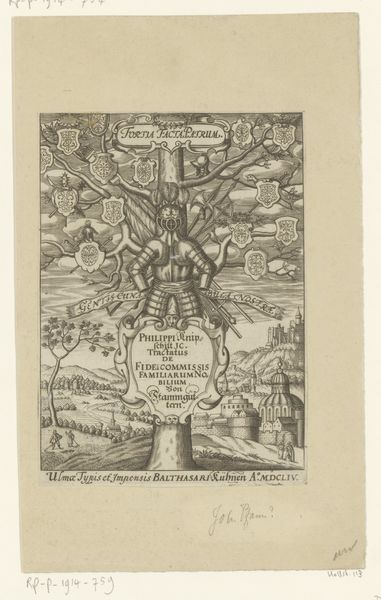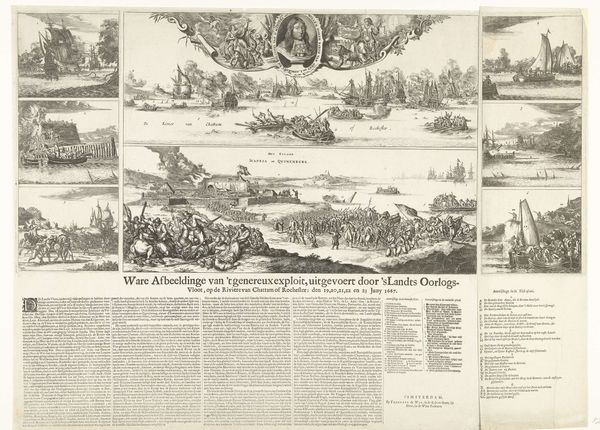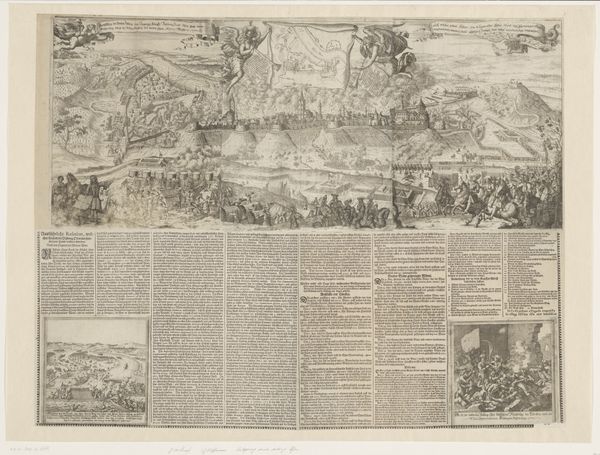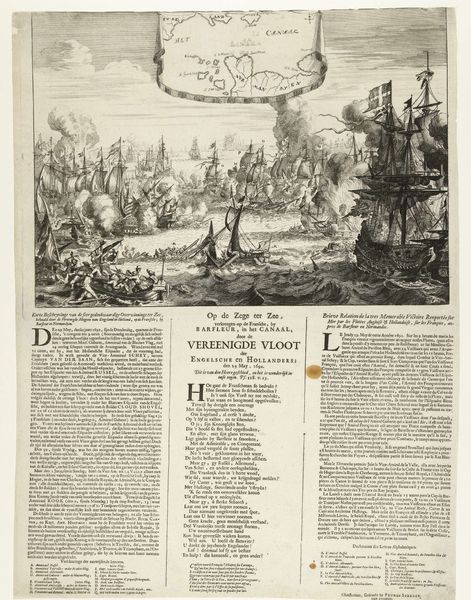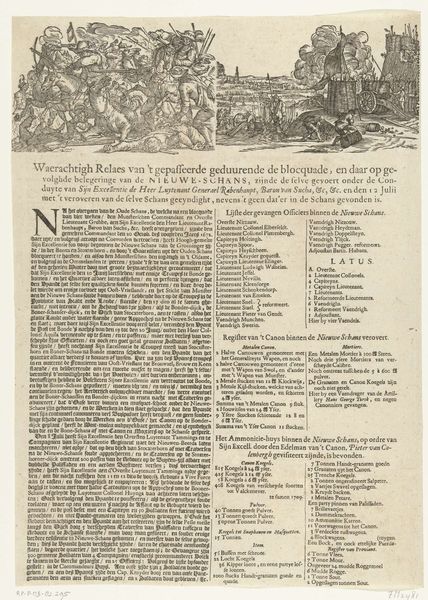
print, engraving
#
pen drawing
# print
#
landscape
#
cityscape
#
history-painting
#
engraving
Dimensions: height 252 mm, width 358 mm, height 290 mm, width 360 mm
Copyright: Rijks Museum: Open Domain
Editor: We’re looking at “Siege of Grave by William III,” made in 1674 by Romeyn de Hooghe. It’s an engraving and etching that depicts a bird’s eye view of a besieged city. It feels very detailed, almost like a map. What strikes you about this image? Curator: This print offers us insight into the role of art as political propaganda and historical record in 17th century Netherlands. These detailed images of battles and sieges were popular, serving almost as news reports for a public hungry for information about ongoing conflicts, especially those involving the Dutch Republic. What does it tell us about the perceived importance of such sieges? Editor: Well, seeing the portraits of the leaders prominently displayed at the top makes it seem like a celebration of power, reinforcing a specific narrative. Curator: Precisely. These images were not neutral records but carefully constructed narratives intended to shape public opinion and bolster support for the ruling powers. Look at how the artist uses perspective to emphasize the strength of the besieging forces. It is not merely about recording an event, but about promoting a particular understanding of power dynamics and political legitimacy. Can you imagine who the target audience was? Editor: I'd assume the wealthy merchant class? Those invested in the stability and power of the Republic, right? Curator: Exactly! And think about where they might display it. At home, showing guests or even, perhaps, to customers. It underlines how images like this functioned as status symbols, conveying political alignment. It definitely reframes it as not *just* a battle depiction but also as an articulation of 17th century political and social culture. Editor: So, it's more than just art; it's a historical document revealing societal values and power structures of its time. Thank you. Curator: And now, hopefully, it can serve as a lens through which to examine similar representations of power today.
Comments
No comments
Be the first to comment and join the conversation on the ultimate creative platform.
